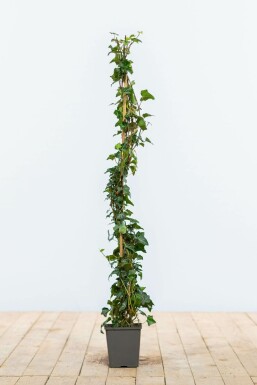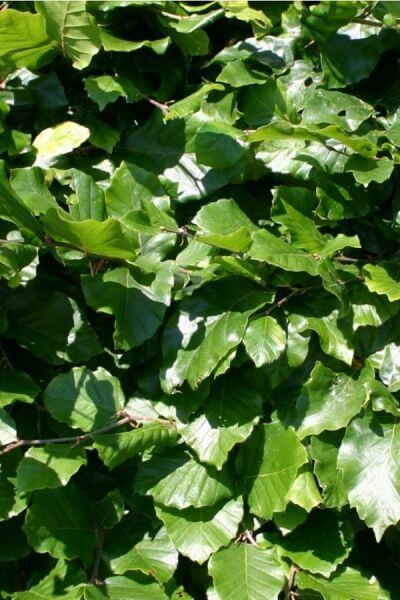Drought-tolerant Hedging Plants
Enhance your garden's attraction with rich hedge varieties such as Yew (Taxus), Thuja, Laurel, Photinia, and Bamboo, commemorated for their structural integrity and ecological advantages.
Yew and Thuja provide evergreen coverage and winter season resilience, while Laurel uses rapid growth and broad, aromatic leaves.
Photinia adds seasonal appeal with its lively red foliage, and Bamboo lends a low-maintenance, tranquil ambiance.
These hedges improve air quality, minimize sound, and produce tranquil, private spaces.
Proper planting, spacing, and upkeep guarantee vigorous development and ecological harmony.
Check out how these rich varieties can raise your garden's charm and wellness.
Key Takeaways
Transform Your Garden With Lush Hedge Ranges
- Select Yew for its thick, evergreen development and exceptional durability.
- Select Laurel for its quick development and broad leaves, guaranteeing fast privacy.
- Choose Photinia for its dynamic seasonal foliage, which turns a striking dark red.
- Use Bamboo for a low-maintenance, winter-hardy hedge with visual appeal.
- Area plants 2-3 per meter and prune frequently for optimum growth and health.
Popular Hedge Plants
When transforming a garden with rich hedge ranges, it's necessary to think about popular hedge plants such as Yew, Thuja, Laurel, and Photinia due to their special attributes and advantages.
Yew (Taxus) is extremely respected for its durability and thick, green development, making it a prime option for sustaining landscapes.
Thuja is kept in mind for its evergreen foliage and robust winter season durability.
Photinia adds seasonal vibrancy with red leaves that darken gradually, producing dynamic visual appeal.
Laurel offers rapid growth and aromatic, broad leaves, perfect for quick privacy.
Additionally, Bamboo is an excellent choice for atmosphere, providing a low-maintenance, winter-hardy choice that boosts the garden's visual with its classy, swaying walking canes.
These selections deal with a range of horticultural needs and preferences.
Advantages of Garden Hedges
Garden hedges use a plethora of benefits, making them a valuable addition to any landscape. These natural barriers are cost-efficient to execute and provide significant wind defense, enhancing air blood circulation and adding to noise decrease. The dense foliage of hedges like Thuja and Beech ensures personal privacy by obstructing exposure, creating a secluded and tranquil environment.
Hedges also play an important function in microclimate policy, providing a stable environment that cultivates plant development and minimizes temperature level fluctuations. Their complex leaf structures filter toxins, improving air quality and adding to a much healthier garden ecosystem.
Furthermore, hedges stand out in noise reduction, taking in and deflecting acoustic waves to lower ambient noise levels. This dual functionality of supplying both visual and acoustic personal privacy boosts the overall serenity and visual appeal of any garden.
Planting and Upkeep Tips
For an effective hedge, meticulous preparation of the planting area is vital. Guarantee the soil has correct pH and drain to support strong root development.
Space the plants appropriately for the selected types. Water the hedge regularly throughout its preliminary development phase, adjusting as needed with seasonal changes.
Implement a methodical insect control and disease avoidance technique, utilizing chemical or natural treatments when needed. Routinely examine for aphids, termites, and fungal infections.
Apply mulch to keep moisture and suppress weeds. Seasonal pruning promotes dense development and air blood circulation, necessary for plant health.
Following these standards will help you cultivate a lively, properly maintained hedge that boosts the appeal of your garden.
Spacing and Trimming Guidelines
Spacing and Cutting Standards
Appropriate spacing and trimming are crucial for cultivating healthy, visually appealing hedges. Appropriate spacing guarantees each plant receives sufficient nutrients, light, and airflow.
Follow these guidelines for optimal hedge upkeep:
- Spacing: Position hedge plants 2-3 plants per meter to motivate robust growth.
- Pruning Techniques: Routine pruning is important for maintaining wanted hedge height and shape. Trim new development in summer and cut down older wood during winter season.
- Seasonal Care: Adjust cutting methods and schedules according to seasonal requirements to make sure plant health.
- Hedge Height: Routinely display and trim to keep the preferred hedge height and attain uniform aesthetics.
Following these actions will ensure your hedge prospers, boosting both the appeal and functionality of your garden.
Picking the Right Hedge
Choosing the Right Hedge
Choosing the proper hedge involves assessing aspects such as mature height, foliage density, and ecological resilience. Effective hedge plant choice requires understanding each types' development characteristics and site-specific versatility.
For instance, Yew Additional info (Taxus) uses excellent longevity and thick development, while Thuja is significant for its winter resilience. Furthermore, thinking about upkeep requirements is crucial; fast-growing species like Laurel or Privet demand regular trimming, whereas low-maintenance choices like Bamboo or Ivy might be more effective for those looking for very little maintenance.
Ecological aspects such as soil type, light schedule, and wetness conditions must likewise assist the choice procedure. This mindful technique guarantees the picked hedges will thrive, providing both practical and visual advantages to the garden landscape.
Shipment and Planting Recommendations
To guarantee your hedge plants flourish, they ought to be delivered by specialized carriers and planted without delay upon arrival.
Follow these necessary actions for effective planting:
- Soil Preparation: Enhance the soil with raw material to enhance drain and nutrient content.
- Planting Depth: Create a trench two times the width and equivalent to the depth of the root ball.
- Watering Methods: Water thoroughly after planting, keeping the soil consistently moist however not saturated.
- Mulching: Apply a layer of mulch to maintain moisture and suppress weeds.
Consumer Support and Service
Offered the important role of prompt support in horticultural pursuits, our customer assistance team is readily available 6 days a week through telephone, email, and social networks to provide skilled recommendations and swiftly address any issues. Their commitment to quick action times guarantees customer fulfillment by fixing questions associated with plant health, optimal planting techniques, and upkeep schedules.

Interaction Technique
-------------------
Email
This thorough assistance system, strengthened by a stellar 9.3/ 10 consumer score, highlights our commitment to boosting the gardening experience for each customer.
Often Asked Questions
The Length Of Time Does It Take for Hedge Plants to Develop?
Hedge plants typically need one to three years to end up being completely developed, with the precise period varying by types and growing conditions.
Efficient care throughout this crucial duration is essential for robust development. Constant watering, watchful weed control, and proper fertilizer application are pivotal in promoting strong root advancement.
For instance, fast-growing species like Laurel might develop quicker, while slower-growing ranges such as Yew may take longer. Diligent upkeep speeds up the establishment process, leading to healthy and dense hedges.
What Are the very best Hedge Plants for Personal Privacy?
The concern of the very best hedge plants for privacy includes examining evergreen and deciduous options.
Evergreen hedges like Thuja, Laurel, and Cypress offer year-round protection, making sure continuous privacy.
In contrast, deciduous hedges such as Beech provide seasonal personal privacy, shedding leaves in cooler months.
Secret upkeep tips for privacy hedges include regular trimming, fertilizing in spring, and appropriate spacing-- usually 2 to 3 plants per meter.
In addition, constant watering and thorough weed elimination are essential for promoting healthy, thick growth.
Can Hedge Plants Attract Wildlife to My Garden?
Yes, hedge plants can attract wildlife to your garden by providing important benefits like shelter, food, and nesting sites, thus improving local biodiversity. For instance, yew, holly, and laurel are outstanding for drawing in birds, while ivy supports a variety of insects.
However, it's important to note that there are some downsides, such as increased upkeep to manage pests and routine maintenance. Carefully selecting and keeping hedge ranges can help balance these advantages and disadvantages, eventually fostering a sustainable and lively community in your garden.
Exist Any Blooming Hedge Plants Available?
Yes, there are flowering hedge plants available that can boost the charm of your garden.
For example, Elaeagnus, likewise called Olive Willow, produces aromatic white flowers in the fall, adding a touch of sophistication.
Photinia, another popular choice, showcases lively red leaves that grow into an abundant green, creating a vibrant visual effect throughout the seasons.
To make sure these plants prosper, it's vital to practice correct pruning methods and seasonal upkeep, such as trimming brand-new development in the summertime and cutting down in the winter.
These steps will help preserve the health and visual appeal of your flowering hedges.
How Do I Prevent Bugs in My Hedge Plants?
To avoid pests in hedge plants, utilize natural bug control approaches and preserve correct hedge care. Introduce useful pests like ladybugs, which prey on hazardous insects, to develop a balanced ecosystem.
Routinely check your hedges for indications of infestation and immediately get rid of any affected parts to prevent the spread. Guarantee the health of your hedges by using well balanced fertilizers and supplying appropriate water.
Make use of mulching to maintain soil moisture and proper spacing to reduce plant stress and promote robust growth. These practices collectively help in reducing insect problems and preserving a healthy hedge.
Conclusion
In essence, selecting the best hedge varieties such as Yew, Thuja, and Laurel can transform any garden into a peaceful haven. These plants provide year-round greenery, boost visual appeal, and deal useful benefits like noise decrease and wind defense.
Correct planting strategies, accurate spacing, constant watering, and seasonal cutting are essential for optimum growth.
Trusted shipment services and professional customer assistance make sure a smooth experience from purchase to planting, making it simpler than ever to raise your outside space.
Garden hedges offer a plethora of advantages, making them a valuable addition to any landscape. These natural barriers are cost-effective to carry out and offer significant wind defense, improving air blood circulation and contributing to sound reduction. The thick foliage of hedges like Thuja and Beech ensures personal privacy by obstructing presence, producing a serene and remote environment.

Pruning Strategies: Routine pruning is vital for preserving preferred hedge height and shape. Trim brand-new development in summertime and cut back older wood throughout winter season.